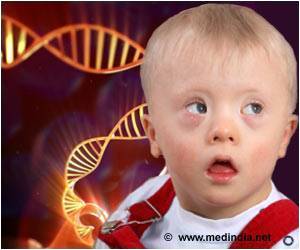New neurodevelopmental disorder has been discovered by scientists at the Murdoch Childrens Research Institute after uncovering its link to a tumor suppressor gene, published in the American Journal of Human Genetics.
The study team used cutting-edge diagnostic tools, genomic sequencing, and global data-sharing platforms to identify the association of this disorder in 35 people, aged 2 to 44 years.
It was found that variations in the FBXW7 gene were associated with this newly identified condition, which causes mild to severe developmental delay, intellectual disability, hypotonia, and gastrointestinal issues.
‘Scientists have now linked previously recognized tumor suppressor genes to a new neurodevelopmental syndrome. The new syndrome is characterized by mild to severe developmental delay, intellectual disability, hypotonia, and gastrointestinal issues.’
As the FBXW7 gene is involved in regulating the life-cycle of cells, cell growth, and survival, the research team speculated that abnormal cell proliferation during brain development may underpin the broad spectrum of brain abnormalities identified in this new disorder.
“FBXW7 now joins a steeply increasing number of intellectual disability/autism spectrum disorder genes that have been implicated in disorders that affect nervous system development, leading to atypical brain function, affecting emotion, learning ability, self-control and memory,” says Murdoch Children’s researcher Dr. Sarah Stephenson.
“The diagnosis has given closure and certainty to families, will personalise clinical care of each affected individual and has revealed the genetic and reproductive risks. It’s a dominant condition so an affected person will have a 50-50 chance of passing it on to each of their children. This diagnosis will empower those impacted to make decisions about their reproductive options,” says Murdoch Children’s Professor Tiong Tan, a clinical geneticist at Victorian Clinical Genetics Services (VCGS).
The team further plans to test the results in human stem cells, which would be engineered into brain cells for analysis in the lab, and develop a better understanding of how the brain was affected in this condition.
Source: Medindia



